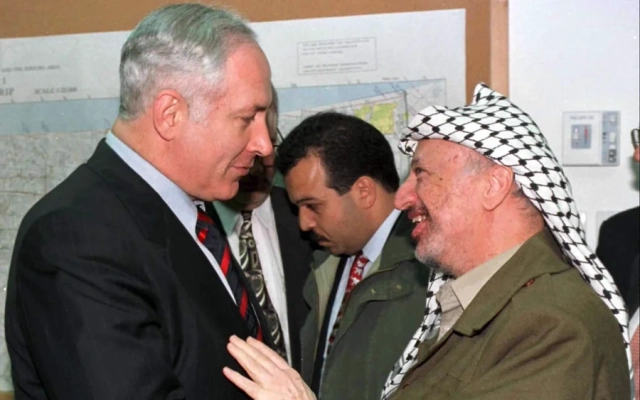On September 13th, 1993, a historic moment unfolded as the Oslo Accords were signed between the State of Israel and the Palestine Liberation Organization (PLO). This pivotal event marked a significant turning point in the ongoing Israeli-Palestinian conflict, and its ramifications continue to reverberate through the region three decades later. In this comprehensive rewrite, we delve into the intricacies of the Oslo Accords, their aftermath, and the enduring impact they have had on both Israelis and Palestinians.
The Oslo Accords, signed during a White House ceremony hosted by then-US President Bill Clinton, showcased a hopeful prospect for peace in the Middle East. At the heart of the accords was the Declaration of Principles on Interim Self-Government Arrangements. This document was inked by Israeli Foreign Minister Shimon Peres and Palestinian negotiator Mahmoud Abbas, symbolizing a commitment to resolving their differences through negotiation and cooperation. The handshake between Israeli Prime Minister Yitzhak Rabin and PLO Chairman Yasser Arafat remains an iconic image, representing a moment of optimism and the possibility of coexistence.
The essence of the Oslo agreement revolved around mutual recognition and nonviolence. Israel acknowledged the PLO as the legitimate representative of the Palestinian people, while the PLO reciprocated by recognizing the state of Israel. Furthermore, the accords outlined a plan for the gradual transfer of certain territories to Palestinian control, paving the way for the creation of the Palestinian Authority (PA). These measures were intended to foster trust and pave the path to a comprehensive peace settlement.
September 12, 1993,day before the signing of the Oslo Accords between Israel and the #Palestinians, Yechiel Karmi was driving a bus 300 from Ashkelon to Tel Aviv at 6 in the evening. At the "Ad Halom" junction, an Arab passenger got on the bus and started throwing grenades
— Israel Kicks A** (@Israelkicksass) September 12, 2023
1/3 pic.twitter.com/bAc9JvyoPu
However, the optimism that permeated the Oslo Accords has faded over the years. Both sides have repeatedly violated the terms of the agreement, leading to a disillusionment that now prevails. Ordinary Palestinians, like Ahmed Al-Abadilah, have expressed their frustration, viewing the accords as mere "ink on paper." Their hopes for prosperity and a better future have been dashed, leaving them disillusioned and disheartened.
Iman Hosana, a 20-year-old Gaza resident who was born after the signing of the Oslo Accords, encapsulates the prevailing sentiment among the younger generation. She laments that the accords have "destroyed our dreams, our future, and our ambitions." It is a stark reminder that the promise of peace and prosperity remains elusive for many Palestinians.
The Oslo Accords were meant to be a stepping stone towards an independent Palestinian state, yet this vision has been mired in a quagmire of stalled negotiations, a lack of initiative from the Israeli side, dysfunctional Palestinian governance, and persistent acts of, mostly, Palestinian terrorism. Consequently, the dream of a peaceful resolution to the long-standing conflict has become increasingly remote. The bitter taste of an unending cycle of violence and uncertainty lingers in the minds of both Israelis and Palestinians, 30 years after that historic handshake.
Such an honour & inspiration for FM @AHuitfeldt to visit the @PeresCenter & meet his son @chemiperes
— Norway MFA (@NorwayMFA) September 13, 2023
On this day, 30 year ago, the Oslo Accord was signed @PresidentPeres’s legacy is still alive.
Peace is no zero-sum game and will benefit both Israel and its neighbours pic.twitter.com/NJq20lkWbD
The Oslo Accords, signed with great hope and anticipation, have failed to deliver on their promises of lasting peace and prosperity for Israelis and Palestinians alike. Instead, they serve as a stark reminder of the challenges and complexities inherent in resolving one of the world's most enduring conflicts. As we reflect on these three decades since that momentous day in 1993, the quest for a just and lasting solution to the Israeli-Palestinian conflict remains as urgent as ever.


